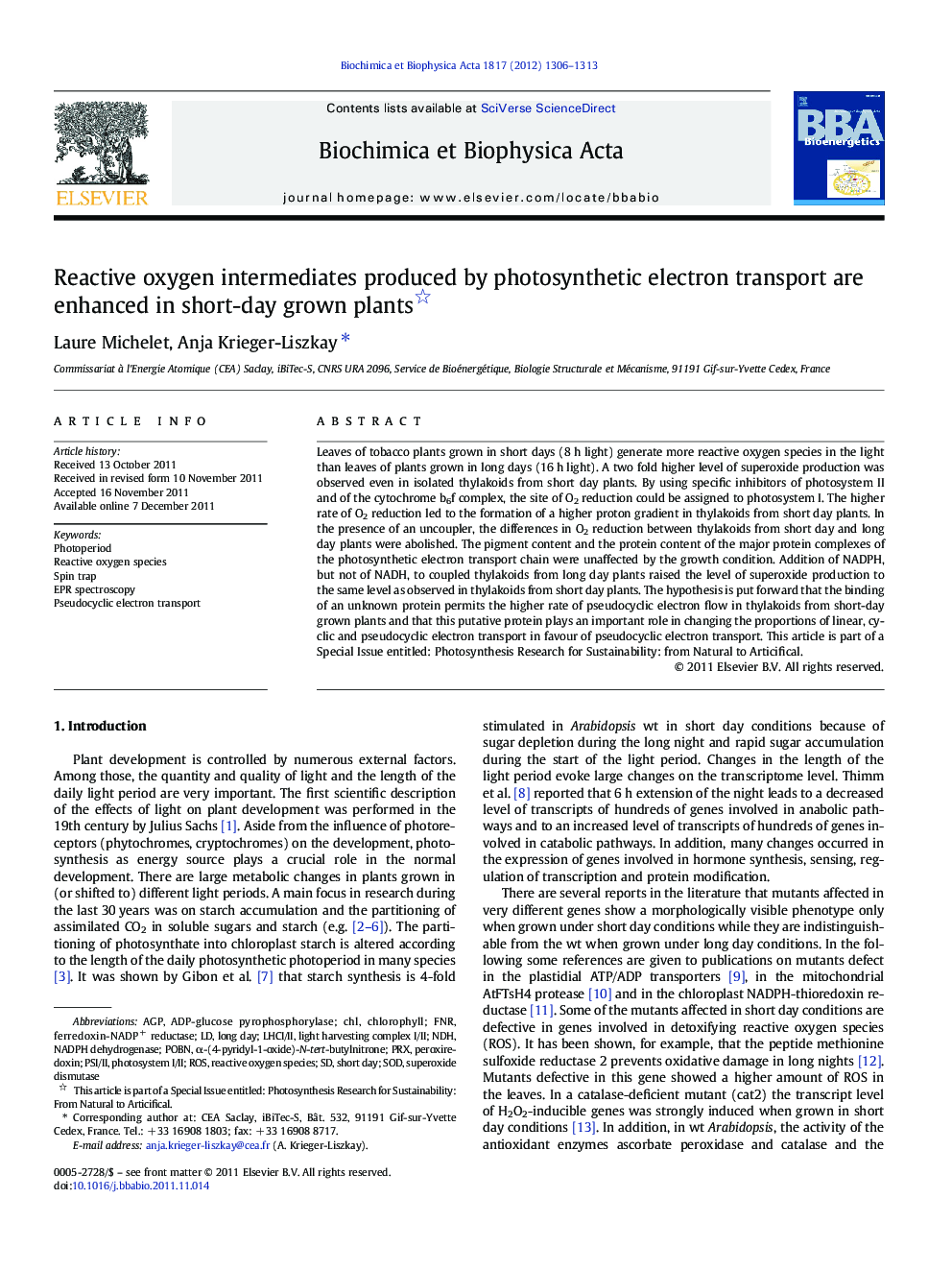| Article ID | Journal | Published Year | Pages | File Type |
|---|---|---|---|---|
| 1942403 | Biochimica et Biophysica Acta (BBA) - Bioenergetics | 2012 | 8 Pages |
Leaves of tobacco plants grown in short days (8 h light) generate more reactive oxygen species in the light than leaves of plants grown in long days (16 h light). A two fold higher level of superoxide production was observed even in isolated thylakoids from short day plants. By using specific inhibitors of photosystem II and of the cytochrome b6f complex, the site of O2 reduction could be assigned to photosystem I. The higher rate of O2 reduction led to the formation of a higher proton gradient in thylakoids from short day plants. In the presence of an uncoupler, the differences in O2 reduction between thylakoids from short day and long day plants were abolished. The pigment content and the protein content of the major protein complexes of the photosynthetic electron transport chain were unaffected by the growth condition. Addition of NADPH, but not of NADH, to coupled thylakoids from long day plants raised the level of superoxide production to the same level as observed in thylakoids from short day plants. The hypothesis is put forward that the binding of an unknown protein permits the higher rate of pseudocyclic electron flow in thylakoids from short-day grown plants and that this putative protein plays an important role in changing the proportions of linear, cyclic and pseudocyclic electron transport in favour of pseudocyclic electron transport. This article is part of a Special Issue entitled: Photosynthesis Research for Sustainability: from Natural to Articifical.
► Plants generate more reactive oxygen species in the light when grown in short-days. ► The higher production of reactive oxygen species is still observed in thylakoids. ► More superoxide is produced at the level of photosystem I in short day conditions. ► Protein levels of major photosynthetic electron transfer complexes are unchanged. ► An unknown protein could regulate pseudocyclic electron flow in thylakoids.
